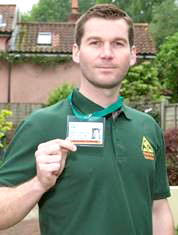Tackling the problems caused by derelict buildings and land is a key focus of ambitious plans to enhance towns and villages across County Durham.
Next week, Durham County Council’s Cabinet will be asked to endorse the local authority’s ongoing commitment to addressing these issues as part of its multi-million-pound Towns and Villages regeneration strategy.
The strategy reflects the council’s commitment to place-based regeneration, with more than £750 million of public and private sector investment already earmarked for schemes across the county. This will help County Durham recover from the impact of the coronavirus pandemic and also ties in with the council’s belief that when investing in an area, the best outcomes are achieved by working with partner organisations and local groups to identify each community’s strengths and needs.
Derelict land and buildings, including homes, commercial premises and retail units, were highlighted as a significant concern by many residents during a series of online public consultation events hosted by the council’s 14 Area Action Partnership last autumn. As well as being an eyesore, residents spoke of how vacant buildings can present safety issues, attract fly-tipping and anti-social behaviour and detract from other efforts to revitalise an area.
Business rates data indicates there are around 1,500 vacant commercial properties in County Durham and 10,500 empty residential properties. This includes 6,400 homes that have been vacant for six months or more, with a large proportion located in disadvantaged areas.
Reducing the number of long-term empty properties is integral to the council’s Housing Strategy, with advice and practical and financial support being offered to owners to help them remedy issues and bring buildings and sites back into use.
The £25 million Towns and Villages Investment Plan – which is specifically aimed at supporting disadvantaged communities – will allow the local authority and its partners to build on this work in areas where it is needed most.
Pilot projects have already been delivered in locations including Sacriston and Seaham. In Sacriston, Towns and Villages funding has helped transform the former Co-operative building into a thriving base for a variety of community interest companies.
In Seaham, meanwhile, the council was able to secure the demolition of a vacant pub after the owner repeatedly failed to clear up the site. Future opportunities to develop the land are now being explored and the council will take all necessary steps to achieve its strategic objectives.
Cabinet will be asked to note the success of pilot projects and endorse the approach set out as part of the Towns and Villages strategy when it meets on Wednesday 17 March.
At the same meeting, Cabinet will also be asked to back the introduction of new Targeted Delivery Plans for areas of the county in need of social housing. The plans would include measures such as buying and refurbishing empty properties to meet this demand.
Cllr Kevin Shaw, Durham County Council’s Cabinet member for strategic housing and assets, said: “Vacant buildings and derelict land not only spoil the look of an area but can attract nuisance and even criminal behaviour that deeply affects how residents feel about their neighbourhood.
“Our Towns and Villages strategy is about investing in projects that enhance communities, ensuring they remain places people are proud to call home, where residents feel safe and connected. By removing eyesore buildings or redeveloping them in ways that benefit communities, we are doing more than solving a problem; we are turning it into a force for good. This includes turning some empty homes into much needed social housing.”
Cllr Shaw added: “Businesses are also far more likely to locate in an attractive area with well looked after buildings and, when they see the regeneration work underway, many may choose to take on other vacant buildings themselves. This in turn will create new jobs and opportunities for residents, boosting the local economy at a crucial time.”
To find out more about the Towns and Villages strategy, visit www.durham.gov.uk/townsandvillages











